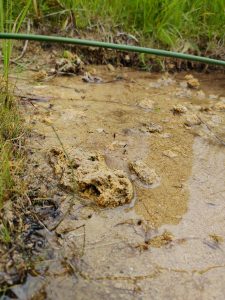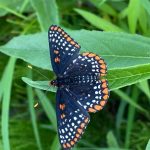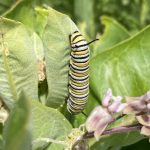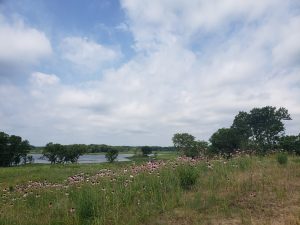
The Kishwaukee Fen Nature Preserve: A Hidden Gem in Lakewood
Have you heard of the Kishwaukee Fen? Situated on a 35.5 acre parcel adjacent to Redtail Golf Club, the fen–a rare type of calcium-rich wetland–is a hidden gem nestled in the neighborhoods of Lakewood. Sadly, the site has been overlooked in conservation efforts, and this unique nature preserve has gone virtually unmanaged for decades. The Land Conservancy of McHenry County (TLC) and Friends of Illinois Nature Preserves (Friends) want to partner with village residents and administrators to care for, restore and revitalize the Kishwaukee Fen Nature Preserve.
The fen’s story began when it formed thousands of years ago, following the glacial retreat over northeastern Illinois during the last ice age. In the 19th and 20th centuries, agricultural practices took their toll on the once pristine habitat, but the wetland resolutely remained. Things looked bright in 1993 when the property was designated as an Illinois Nature Preserve–the highest level of protection a natural area can receive in the state–but dreams of full restoration didn’t quite come true. Ever since, the native plants and animals of the preserve have faced an onslaught of invasive species–and golf balls, too!

But all is not lost, and the fen’s unique features, remaining natives, and prime location, make for an incredibly promising restoration project.

From groundwater seeps and springs with tufa formations–porous rocks created when minerals from the water solidify–as well as small hanging fens, the preserve has no shortage of uncommon hydrological characteristics. Such rare habitats mean the fen is home to an abundance of native species. Native plant species spotted at the site include black-eyed susan, blazing star, mountain mint, and milkweed, to name just a few. The endemic flora help make the fen a great habitat for stunning creatures like monarch and Baltimore checkerspot butterflies, American goldfinches, red-winged blackbirds and sandhill cranes. With such rich biodiversity already in place, the site has great potential to be fully restored to its original health and beauty.

Unfortunately, due to years of neglect, invasive plants have also put down roots. Reed canary grass, buckthorn, wild parsnip, Canadian thistle, and cattails all have a strong presence throughout the preserve. With proper care and management, these invaders can be vanquished. With a restoration project, residents living near the property can expect to see common invasive management practices implemented at the site, including prescribed burning, herbiciding, and manual brush removal. These procedures are an important part of rehabilitating the habitat, and will pave the way for native plants and animals to make a comeback. Tentative plans also include adding public access and trails to the site, making the fen an ideal place for you and your family to explore and enjoy.

It’s time to put the Kishwaukee Fen Nature Preserve back on the map. With committed citizens working together, the site can return to its former glory, and become a bastion of natural beauty that Lakewood residents can enjoy for generations to come. To learn more, or to be a part of the restoration campaign, contact TLC at [email protected] and Friends at [email protected], or watch for announcements about upcoming workdays at the fen.
All the Kishwaukee Fen Nature Preserve needs is a little TLC from TLC and Friends–and you!
Submitted by TLC Interns Arden Podpora (Cornell University, junior), Kristi Robinson (McHenry Community High School, senior), Claire Gregory (Augustana College, senior), Evelyn Bustos (Harvard High School, senior), and Sofia Oropeza (Woodstock High School, sophomore).

Facebook: @ConserveMC
Facebook: @FriendsILNature


